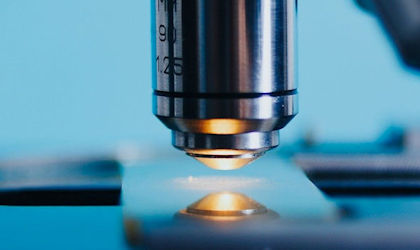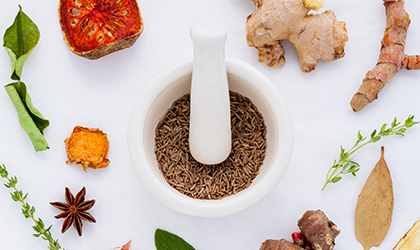Cereals and milling services information

To discuss your needs
All tests have a 10 working day turn around time. Please note that working days are defined by days on which the Chipping Campden site is open. Quicker turnaround can be agreed at time of request - this incurs a 30% uplift on price.
Testing services on this page
Cereal testing test list
- Ash (%) dry matter basis (UKAS) TES-CM–112 based on CCAT method 12, minimum sample size 50g
- Bühler milling (extraction rate %) (UKAS) TES–CM–001 (prices per 1000g, for bulk please enquire), minimum sample size 2000g
- Chopin–Alveograph – Wheat (non UKAS) TES–CM–056 based on ICC Standard 121, conforming to ISO27971:2008, minimum sample size 1000g
- Ergot sclerotia content (%) (non UKAS) TES–CM–132 based on CCAT method 30, minimum sample size 1000g
- Gluten dry (%)– KT–ground wheat (non UKAS) TES–CM–113 based on CCAT method 13, minimum sample size 250g
- Gluten wet (% & comments) – KT–ground wheat (non UKAS) TES–CM–113 based on CCAT method 13, minimum sample size 50g
- Gluten Index – KT–ground wheat (non UKAS) TES–CM–113 based on CCAT method 13, minimum sample size 50g
- Hagberg falling number (seconds) (UKAS) TES–CM–106 based on CCAT method 06, minimum sample size 350g
- Hardness (SKCS units) by single kernel characterisation system (non UKAS) TES–CM–054 based on CCAT method 22, minimum sample size 100g
- Hectolitre weight (kg/hl) (non UKAS) TES–CM–130 using an accurat 2000 system, minimum sample size 800g
- Hectolitre weight (kg/hl) (UKAS) TES–CM–012 based on CCAT method 20 and conforming to ISO 7971–2:2009, also known as bushel or specific weight, minimum sample size 1500g
- Impurities (%) (Schwarzbesatz) TES–CM–053 (non UKAS), minimum sample size 250g
- Maize flotation index (%) TES–CM–080 (non UKAS), minimum sample size 100g
- Maize kernel dimension measurement (mm) (non UKAS), minimum sample size 100g
- Maize kernel stress crack analysis (%) (non UKAS), minimum sample size 100g
- Maize kernel translucency (%) (non UKAS), minimum sample size 100g
- Maize milling and oven moisture (%) (non UKAS), minimum sample size 500g
- Maize thousand kernel/grit weight (g) (non UKAS), minimum sample size 500g
- Oven moisture (%) (UKAS) TES–CM–108 based on CCAT method 08 (<17% moisture), minimum sample size 250g
- Pentosan soluble (%) Wheat (non UKAS) TES–CM–022 based on Douglas method, minimum sample size 20g
- Pentosan total (%) Wheat (non UKAS) TES–CM–022 based on Douglas method, minimum sample size 20g
- Pentosan total, soluble and insoluble by difference (%) Wheat (non UKAS) TES–CM–022 based on Douglas method, minimum sample size 20g
- Protein (% dmb) by Dumas (UKAS) TES–CM–119 based on CCAT Method 19, minimum sample size 250g
- Screenings & admixture (%) (non UKAS) TES–CM–021 based on CCAT method 26, minimum sample size 500g
- SE–HPLC Size distribution of unreduced proteins (non UKAS) based on Profilblé method
- Wheat variety analysis – 14 grain (estimation of individual grain variety by comparison to standards and calculation of associated bulk composition) (non UKAS) TES–CM–052 based on ISO 8981:1993, minimum sample size 50g
- Wheat variety analysis – 28 grain (estimation of individual grain variety by comparison to standards and calculation of associated bulk composition) (non UKAS) TES–CM–052 based on ISO 8981:1993, minimum sample size 100g
- Wheat variety analysis – 56 grain (estimation of individual grain variety by comparison to standards and calculation of associated bulk composition) (non UKAS) TES–CM–052 based on ISO 8981:1993, minimum sample size 100g
- Zeleny index (ml) (non UKAS) TES–CM–44 based on ICC Standard 116/1, minimum sample size 50g
Flour, bakery mixes and products
- Alveograph – Flour (non UKAS) TES–CM–056 based on ICC Standard 121, conforming to ISO27971:2008, minimum sample size 600g NB. The results of the alveograph test are affected by water absorption. Wheat for alveograph testing is Chopin milled. The results for flour milled using a different method will not be directly comparable.
- α–amylase by ceralpha (CU/g) (UKAS) TES–CM–118 based on CCAT method 05, minimum sample size 100g
- α–amylase by ceralpha (CU/g) with flour improver addition (UKAS) TES–CM–118 based on CCAT method 05, minimum sample size 50g
- Ascorbic Acid (ppm) (non UKAS) TES–CM–102, minimum sample size 50g
- Ash (%), as is (UKAS) TES–CM–112 based on CCAT method 12, minimum sample size 50g
- ß–glucan (Mixed–linkage) content of cereals and cereal products (non UKAS) TES–CM–124 based on Megazyme assay, minimum sample size 20g
- Branscan (bran %, number of specks) (non UKAS) TES–CM–064, minimum sample size 300g
- Chittick, total gasometric (% Carbon dioxide) in baking powders, bakery mixes and flour (non UKAS) TES–CM–131 based on AACC method 12–20 and 12–21, minimum sample size 50g
- CIELAB tristimulus colour measurement of flour (L*, a*, b*; 10° observer and D65 illuminant) (non UKAS) TES–CM–126 based on CCAT method 25, minimum sample size 50g
- Colour measurement wet/dry, various geometries and colour spaces available (non UKAS), minimum sample size 10g
- Damaged starch – Megazyme (%) (non UKAS) TES–CM–132 based on CCAT method 21, minimum sample size 50g
- Damaged starch by Farrand (FU) (UKAS) TES–CM–105 based on CCAT method 05, minimum sample size 50g
- Extensograph (500 line) (UKAS) TES–CM–103 based on CCAT method 03, minimum sample size 1000g
- Extensograph (600 line) (non UKAS) TES–CM–116 based on CCAT method 03, minimum sample size 1000g
- Filth test for insect fragments in wheat flour and durum wheat semolina (non UKAS) TES–CM–122 based upon method ISO 11050, minimum sample size 200g
- Full dough development analysis by Farinograph (500 line) (non UKAS) TES–CM–127 based on CCAT method 04, minimum sample size 1000g
- Full dough development analysis by Farinograph (600 line) (UKAS) TES–CM–104 based on CCAT method 04, minimum sample size 1000g
- Gluten dry (%)– flour (non UKAS) TES–CM–113 based on CCAT method 13, minimum sample size 50g
- Gluten wet (%&commenta)– flour (non UKAS) TES–CM–113 based on CCAT method 13, minimum sample size 50g
- Gluten Index – flour (non UKAS) TES–CM–113 based on CCAT method 13, minimum sample size 50g
- Hagberg falling number (seconds) (UKAS) TES–CM–106 based on CCAT method 06, minimum sample size 50g
- Near infrared reflectance determination of protein (%) or moisture (%) (NIR) (non UKAS) TES–CM–114 based on CCAT method 14, minimum sample size 50g
- Oven moisture (%) (UKAS) TES–CM–108 based on CCAT method 08, minimum sample size 50g
- Pentosan soluble (%) flour (non UKAS) TES–CM–022 based on Douglas method, minimum sample size 20g
- Pentosan total (%) flour (non UKAS) TES–CM–022 based on Douglas method, minimum sample size 20g
- Pentosan total, soluble and insoluble by difference (%) flour (non UKAS) TES–CM–022 based on Douglas method, minimum sample size 20g
- Protein (%) by Dumas as is (UKAS) TES–CM–119 based on CCAT method 19, minimum sample size 50g
- Sedimentation test (ml) (non UKAS) TES–CM–110 based on CCAT method 10, minimum sample size 50g
- SE–HPLC Size distribution of unreduced proteins (non UKAS) based on Profilblé method
- Solvent retention capacity (% of retention in water, sucrose, sodium carbonate and lactic acid) (non UKAS) based on AACC Method 56–11.02, minimum sample size 50g
- Water absorption (%) by Farinograph (500 line) (non UKAS) TES–CM–127 based on CCAT method 04, minimum sample size 1000g
- Water absorption (%) by Farinograph (600 line) (UKAS) TES–CM–104 based on CCAT method No.4, minimum sample size 1000g
- Wheat variety analysis – Bread (estimation of varietal composition by quantification of distinctive bands or comparison against specified blends, semi–quantitative) (non UKAS) TES–CM–052 based on ISO 8981:1993, minimum sample size 200g
- Wheat variety analysis – Flour (estimation of varietal composition by quantification of distinctive bands or comparison against specified blends, semi–quantitative) (non UKAS) TES–CM–052 based on ISO 8981:1993, minimum sample size 50g
- Zeleny index (ml) (non UKAS) TES–CM–44 based on ICC Standard 116/1, minimum sample size 50g
Particle analysis
- Dynamic Image Analysis (particle shape and size distribution) – Dry (UKAS) TES–CM–129 based on ISO13322–2:2006, minimum sample size 50g
- Dynamic Image Analysis (particle shape and size distribution)– Wet (in water) (UKAS) TES–CM–129 based on ISO13322–2:2006, minimum sample size 50g
- Dynamic Image Analysis (particle shape and size distribution)– Wet (other than water) (UKAS) TES–CM–129 based on ISO13322–2:2006, minimum sample size 50g
- Laser Diffraction (particle size distribution), minimum sample size 50g
- Dynamic light scattering (particle size distribution), minimum sample size 50g
- Electrical sensing zone technology (particle size distribution), minimum sample size 50g
- Air–jet sieve analysis (% retained) (non UKAS) TES–CM–007, minimum sample size 50g
- Mechanical Sieving (% retained) (non UKAS) (up to 6 sieves) TES–CM–111 based on CCAT Procedure No.03p, minimum sample size 250g
Analysis and testing training courses
Explore our analysis and training related courses including; Thermal processing and validation, Microbiology and Quality management system training
Are you getting the most from your Membership?
Watch our membership FAQ videos and find out more about Member Service Account spending, Member Interest Groups, help and advice
Key services
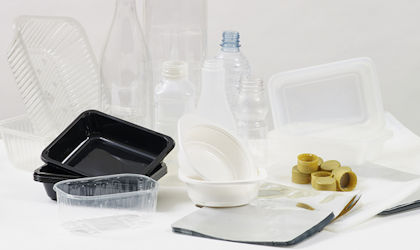
Packaging down the microscope
Microscopy use a range of techniques to examine packaging materials including plastic and metal.
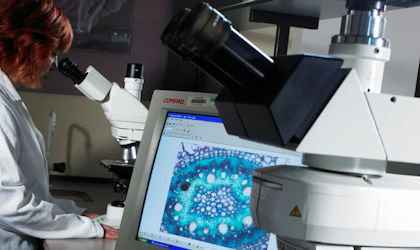
Structure and physical properties
Methods for objective characterisation of food structure and physical properties.

Foreign body identification scheme
Run independently from our own foreign body laboratory, the FOBS scheme enables other laboratories to check their competence in the identification of foreign bodies.
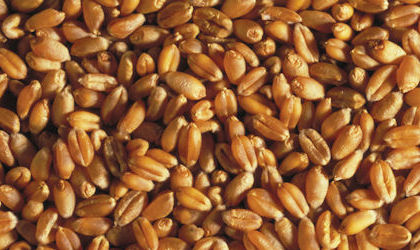
Cereals and milling services
Cereals and milling testing services information, pricing and submission.
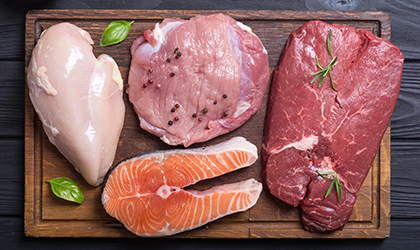
Meat, poultry and seafood analysis
Analysis supporting meat, poultry and seafood suppliers, manufacturers and retailers.
Where we refer to UKAS Accreditation
The Campden BRI group companies listed below are both accredited in accordance with the recognised International Standard ISO17025:2017 by the United Kingdom Accreditation Service (UKAS). The accreditation demonstrates technical competence for a defined scope of methods, specific to each site, as detailed in the schedules of accreditation bearing the testing laboratory number. The schedules may be revised from time to time and reissued by UKAS. The most recent issue of the schedules are available from the UKAS website www.ukas.com
Campden BRI (Chipping Campden) Limited is a UKAS accredited testing laboratory No. 1079 Campden BRI (Nutfield) is a UKAS accredited testing laboratory No. 1207





